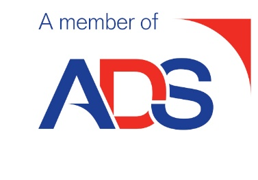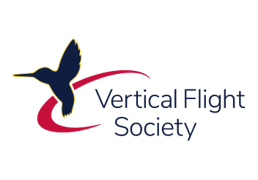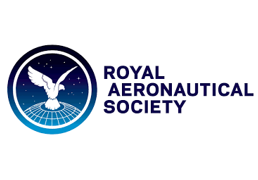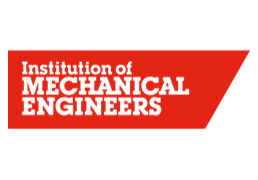News
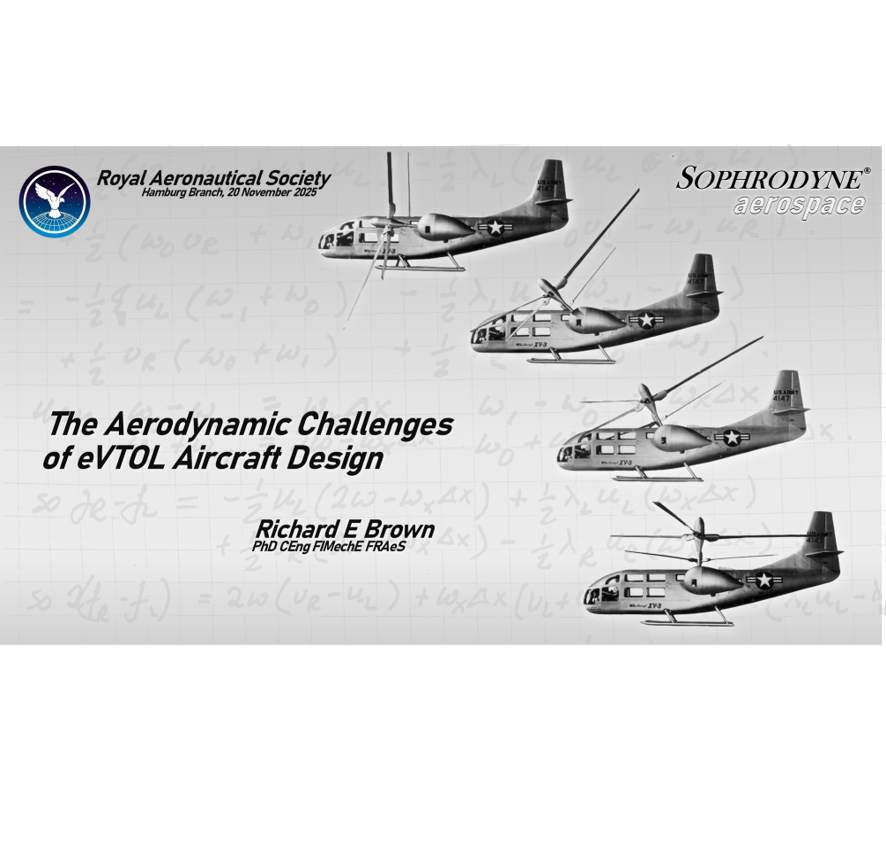
Dr Brown will present a Lecture to the Royal Aeronautical Society Hamburg Branch
HAW, Hamburg, 20 November 2025
Richard will present his talk, titled 'The Aerodynamic Challenges of eVTOL Aircraft Design,' to the Royal Aeronautical Society's Hamburg branch at 6:00pm on 20 November 2025.
The presentation will draw from his original research, as well as his experience in advising regulators and OEMs working at the leading edge of eVTOL aircraft development, to lend an unique perspective on these new aircraft, and will bring the audience up to date with the latest developments in aerodynamic technology.
The tab below will take you to a page giving more details about the event.
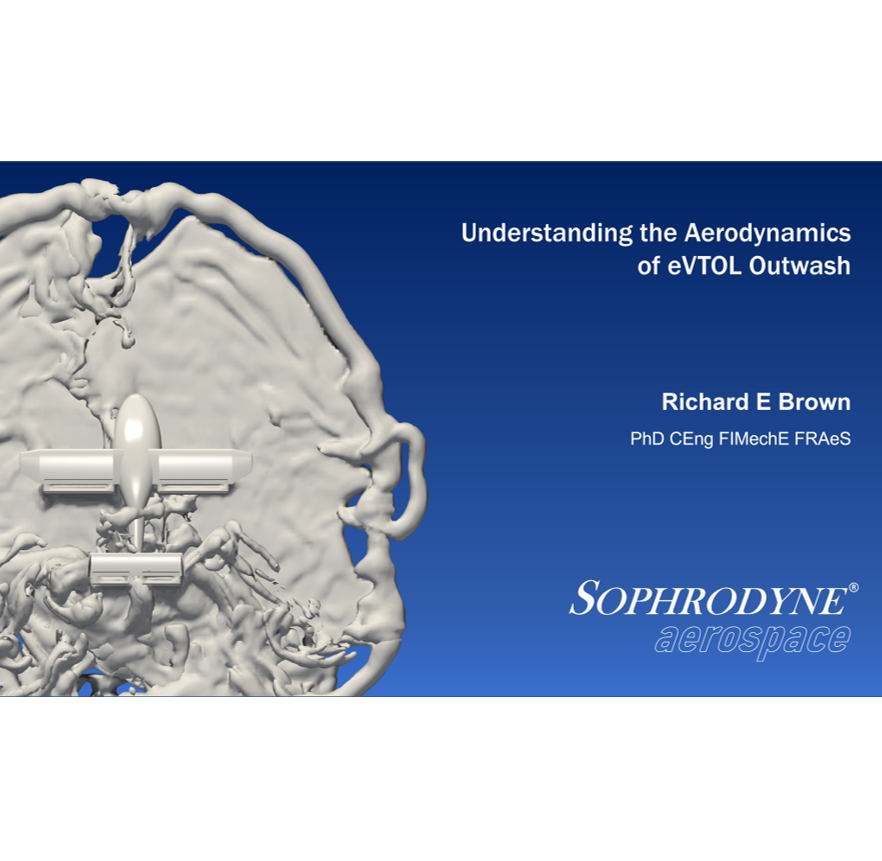
Dr Brown presents his work on rotorcraft outwash
at the 51st European Rotorcraft Forum
at the 51st European Rotorcraft Forum
Venice, 9 - 12 September 2025
Dr Brown presented his paper, titled "Understanding the Aerodynamics of eVTOL Outwash" at this year's European Rotorcraft Forum, held from 9 - 12 September 2025 in Venice, Italy.
The flows out across the surface that are produced by eVTOL aircraft when operating close to the ground are very different in character to those produced by the conventional helicopters on which much of our current understanding of rotorcraft outwash is based, yet accurate quantification of the velocities within these flows is seen as an important part of ensuring the safety of this new form of aerial transport.
An analysis of the fundamental fluid mechanics that governs the formation of the flows in the outwash below these aircraft shows the importance of the inherent instability of the vortical structure of the wakes produced by their propulsors in governing both the form and strength of the flow out across the ground below the aircraft. Numerical experiments show the outwash to be particularly susceptible, through the long-term action of this vortical instability, to losing the symmetries that might have been imparted to it by the geometry of the aircraft. This results in flows that in many cases are far more spatially inhomogeneous than might be expected, where the overall characteristics of the flow can vary considerably over time, and, indeed, where the character of the flow might be dependent on the way in which it was formed in the first place.
Dr Brown concludes that we might need to know a great deal more about the physics that governs the aerodynamic behaviour of these systems before we place too much faith in our ability to quantify the risks posed by these aircraft to bystanders and infrastructure that might become exposed to their outwash.
The tab below will take you to our Downwash Resource page from where you can download a copy of Richard's paper.
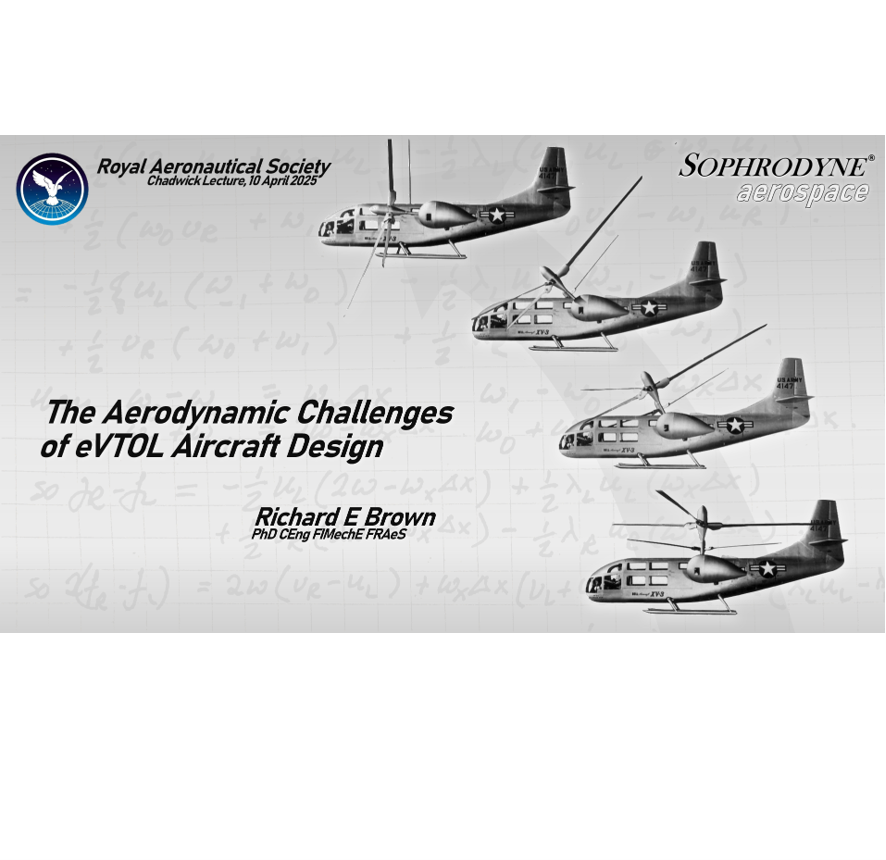
Dr Brown Presents Royal Aeronautical Society
Roy Chadwick Memorial Lecture
Roy Chadwick Memorial Lecture
Avro Heritage Centre, Manchester, 10 April 2025
Richard was honoured to present this year's Royal Aeronautical Society lecture in memory of Roy Chadwick, Chief Designer at Avro in the 1930s and 1940s, and father of the famous Lancaster bomber, as well as the the Lincoln, Shackleton and Vulcan aircraft.
His talk, titled 'The Aerodynamic Challenges of eVTOL Aircraft Design,' drew from his original research, as well as his experience in advising regulators and OEMs working at the leading edge of eVTOL aircraft development, to lend an unique perspective on these new aircraft, and brought the audience up to date with the latest developments in aerodynamic technology.
The tab below will take you to the RAeS web page containing more details about the event.
Dr Brown Presents Course on eVTOL Aerodynamic Design
at Verticon 2025
at Verticon 2025
Dallas, Texas, 9 March 2025
As part of the Verticon 2025 course 'Introduction to eVTOL Aircraft for Helicopter Pilots,' Richard presented a 90 minute overview, showing how the aerodynamic features and characteristics of eVTOL aircraft compare to those of more conventional rotorcraft and helicopters.
He showed that, despite the very obvious differences between these types of flying machines, they share many common aerodynamic features and problems - and thus that the eVTOL and helicopter communities have much to learn from each other's experiences.
This is particularly the case when considering the aerodynamic problems that will arise when these aircraft start to operate from urban landing sites, and Richard drew on his current research on Vortex Ring State and rotor outwash to explain some of the challenges that will need to overcome in integrating these vehicles into the urban transport infrastructure.
The tab below will take you to the conference web page.
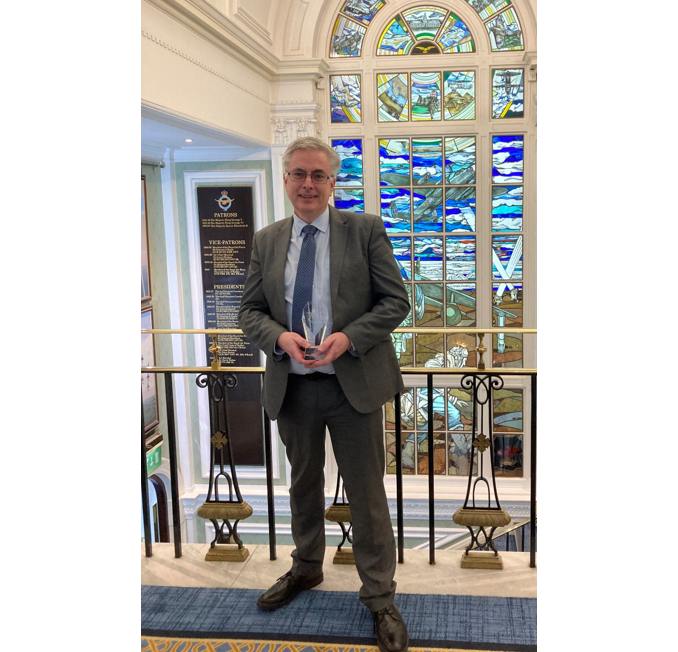
Vertical Flight Society recognises Dr Brown for
'Extraordinary Work in Vertical FLight'
'Extraordinary Work in Vertical FLight'
London, 23 February 2024
Richard was presented with his award 'for extraordinary work in vertical flight' at the annual meeting of the Vertical Flight Society's UK chapter, held at the RAF Club in London on 23 February 2024.
The award recognises Richard's work in understanding the physics of the Vortex Ring State, a particularly hazardous operating regime that a rotorcraft can enter into during the critical descent and landing phases of flight, and in particular his recent analysis which shows how the safety of eVTOL aircraft might be impacted by this phenomenon.
The tab below will take you to the VFS-UK web page containing more details about the award.
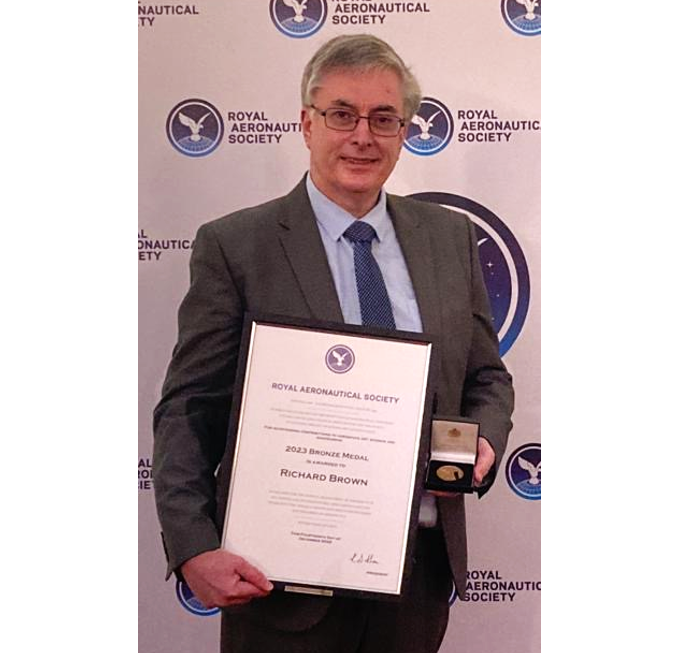
Dr Brown Awarded Royal Aeronautical Society
Bronze Medal
Bronze Medal
London, 14 December 2023
Dr Brown has been awarded the prestigious Royal Aeronautical Society Bronze Medal in recognition of "his contributions over several decades to our understanding of rotorcraft aerodynamics."
The award was presented to Richard at a reception held at the Society's headquarters at 4 Hamilton Place, London, on the evening of 14 December 2023.
"Since 1909, the Royal Aeronautical Society has been honouring individuals and teams for their outstanding contributions to aerospace. This recognition encompasses significant technical innovations, outstanding leadership, and efforts that substantially advance the field of aerospace."
The tab below will take you to the RAeS web page containing more details about the award.
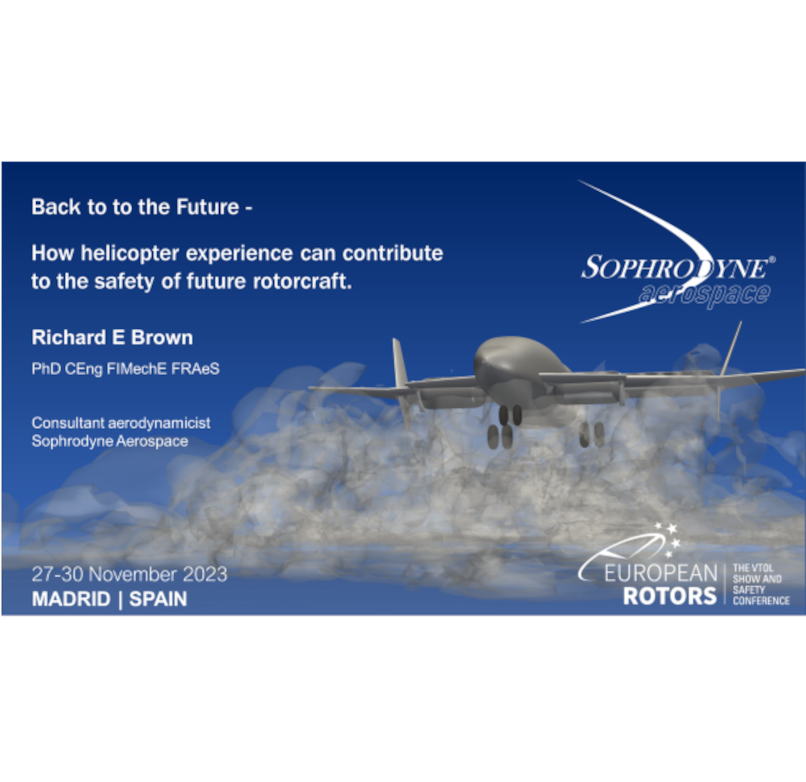
Dr Brown Presents a Keynote Lecture
at European Rotors 2023
at European Rotors 2023
Madrid, 29 November 2023
Dr Brown presented a keynote lecture, titled 'Back to the Future: How Helicopter Experience can Contribute to the Safety of New Rotorcraft' at this year's European Rotors conference, held from 27-30 November in Madrid, Spain.
Dr Brown described how helicopter experience, when suitably augmented by new theoretical insights and supported by appropriate numerical analysis and experimental data, is contributing to the safety of eVTOL aircraft by helping us to understand those features of their aerodynamic behaviour that are particular to this new class of aircraft.
In his talk, he focused on how we are starting to understand which aerodynamic phenomena are likely to be most problematic, especially when eVTOL aircraft start to operate from vertiports that are located within densely-populated urban environments.
The tab below will take you to the conference web page.
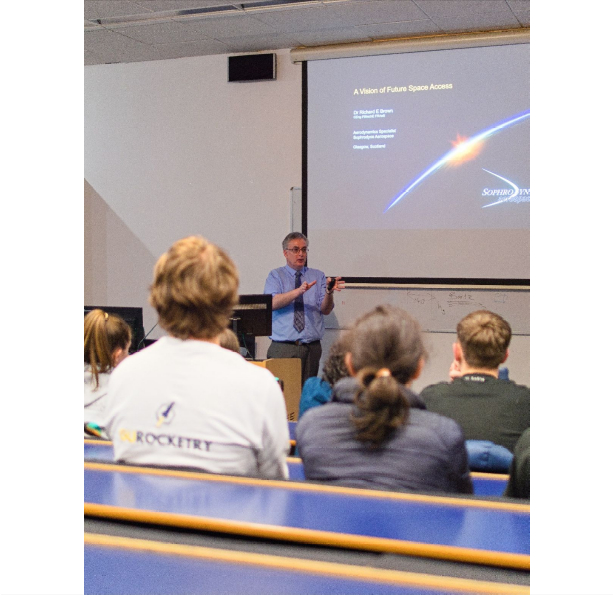
Dr Brown Presents
a Lecture on Single-Stage-to-Orbit Vehicle Design
to the GU Rocketry team
a Lecture on Single-Stage-to-Orbit Vehicle Design
to the GU Rocketry team
Glasgow, 7 November 2023
Dr Brown presented his lecture "A Vision of Future Space Access" to GU Rocketry, a team of enthusiastic young students based in the School of Engineering at Glasgow University.
The talk was based on his experience as Director of the Centre for Future Air-Space Transportation Technology, where his research group was engaged in developing the methodologies that could be used to design the spacecraft of the future.
Dr Brown's lecture concentrated specifically on the problems associated with the design of Single-Stage-to-Orbit spacecraft. These vehicles do not discard any tanks, engines or other components during their ascent, but instead return intact to their launch site. The intent is that these vehicles be refurbished and re-used very simply and quickly for their next mission, allowing very economical access to space compared to expendable launch vehicles.
In his lecture, Dr Brown discussed some of the technological obstacles to achieving this goal, focusing on the hurdles that need to be overcome in developing suitable propulsion and thermal protection systems, and the difficulties involved in integrating the system into a light enough package so that an economical payload can be transported into orbit.
Use the tab below if you would like to schedule Dr Brown to present this lecture to your organisation.
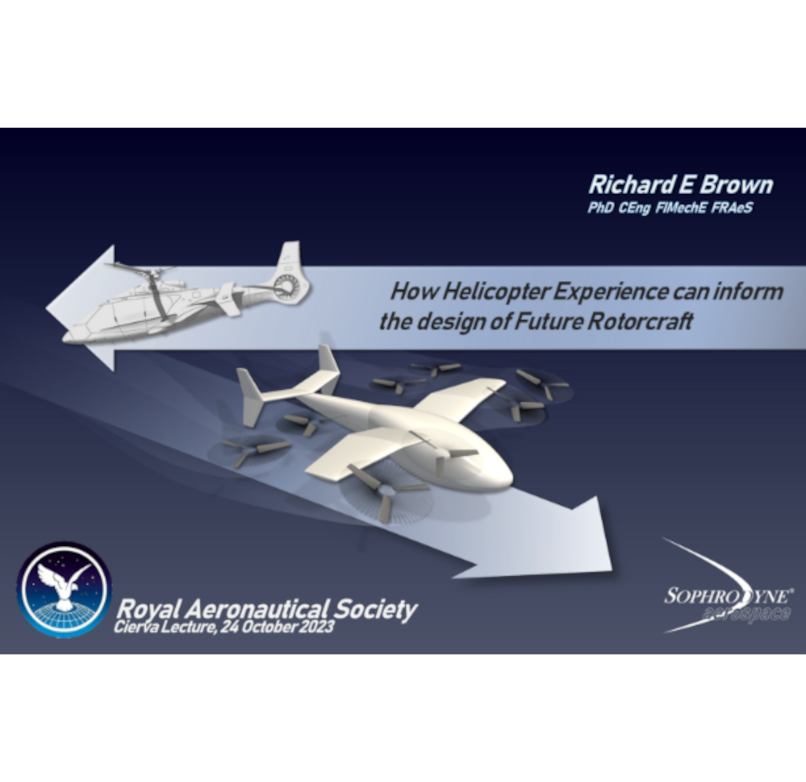
Dr Brown presents
the Royal Aeronautical Society Cierva Named Lecture
the Royal Aeronautical Society Cierva Named Lecture
London, 24 October 2023
Dr Brown presented a public lecture on rotorcraft aerodynamics at the headquarters of the Royal Aeronautical Society at 4 Hamilton Place, London.
His lecture, titled 'Back to the Future: How Helicopter Experience can inform the Design of Future Rotorcraft' showed how several pernicious aerodynamic problems that have been encountered during the development of historical rotorcraft stand to re-emerge, albeit perhaps in slightly different form, when eVTOL aircraft start to take to the skies.
Dr Brown described in detail how the body of historical knowledge needs to be augmented by new theoretical insights, and supported by appropriate numerical analysis and experimental data, to yield the fundamental aerodynamic understanding that is required to ensure the safety of this new class of aircraft. He payed particular attention to the issues that are likely to arise if and when eVTOL aircraft start to operate from vertiports that are located in densely-populated urban environments.
A recording of the lecture will shortly be available via the tab below - until then, the tab will take you to a description of the talk on RAeS website.
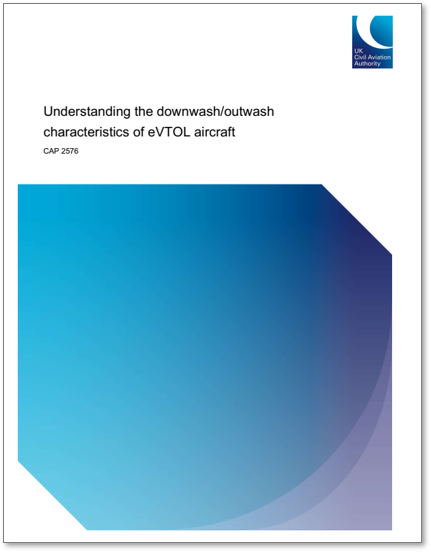
Dr Brown's work on Rotorcraft Outwash
published by the UK Civil Aviation Authority
published by the UK Civil Aviation Authority
17 October 2023
The full version of Dr Brown's research into the outwash that might be created by eVTOL aircraft has now been released publicly as part of the UK Civil Aviation Authority's Publication 2576: 'Understanding the downwash/outwash characteristics of eVTOL aircraft'.
When a rotorcraft is operated at low enough height above the ground, the aerodynamic interaction with the surface below causes the flow from its rotors to expand out across the ground as a layer of rapidly-moving airflow, called its outwash. If this outwash is strong enough, it can cause significant upset to bystanders and nearby infrastructure. A recent numerical study by Dr Brown has shown that the shape and strength of the outwash that any multi-rotor eVTOL aircraft will generate is strongly dependent on the layout of its rotors, amongst other factors.
Indeed, several aspects of the behaviour of the outwash that is created by eVTOL aircraft may come as a surprise to the rotorcraft community - where intuition is largely based on experience with conventional helicopters. In his paper, Dr Brown thus discusses the implications of his findings for the prospective operators of this type of aircraft, as well as for the designers of the vertiports from which these aircraft will fly.
The tab below will take you to our Downwash Resource page from where you can download a copy of Richard's report.

Dr Brown presents his work on rotorcraft outwash
at the 49th European Rotorcraft Forum
at the 49th European Rotorcraft Forum
Bückeburg, 5 - 7 September 2023
Dr Brown presented his paper, titled "Do eVTOL Aircraft create an inherently more problematic Downwash than Conventional Helicopters?" at the European Rotorcraft Forum, held from 5 - 7 September 2023 in Bückeburg, Germany.
When a rotorcraft is operated at low enough height above the ground, the aerodynamic interaction with the surface below causes the flow from its rotors to expand out across the ground as a layer of rapidly-moving airflow, called its outwash. If this outwash is strong enough, it can cause significant upset to bystanders and nearby infrastructure. A recent numerical study by Dr Brown has shown that the shape and strength of the outwash that any multi-rotor eVTOL aircraft will generate is strongly dependent on the layout of its rotors, amongst other factors.
Indeed, several aspects of the behaviour of the outwash that is created by eVTOL aircraft may come as a surprise to the rotorcraft community - where intuition is largely based on experience with conventional helicopters. In his paper, Dr Brown thus discusses the implications of his findings for the prospective operators of this type of aircraft, as well as for the designers of the vertiports from which these aircraft will fly.
The tab below will take you to our Downwash Resource page from where you can download a copy of Richard's paper.
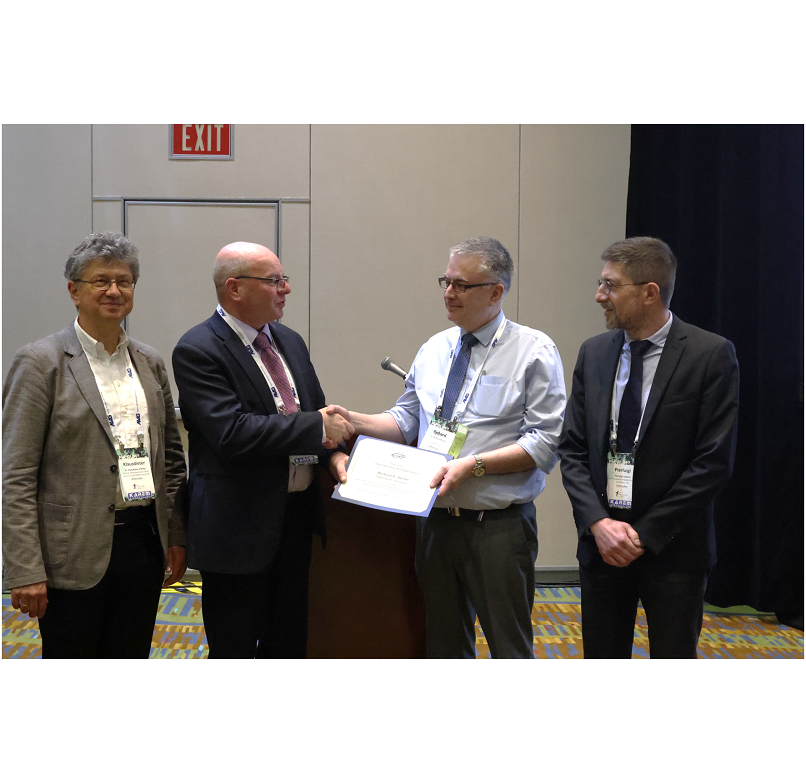
Dr Brown presents his award-winning paper
at the 2023 Vertical Flight Society Forum
at the 2023 Vertical Flight Society Forum
West Palm Beach, Florida, 16 - 18 May 2023
Dr Brown travelled to the USA in May to attend the 79th Annual Vertical Fight Society Forum and Technology Display, where he presented his award-winning paper "Are eVTOL Aircraft Inherently more susceptible to the Vortex Ring State than Conventional Helicopters?" at a special session of the conference.
Richard's paper was awarded 2022's prestigious Ian Cheeseman Prize, given annually to the best technical paper presented at that year's European Rotorcraft Forum.
Richard's work shows how our current understanding of the Vortex Ring State applies to the design of modern eVTOL aircraft. The paper has attracted considerable interest from the community through highlighting a range of effects that designers and operators should be aware of in order to ensure the safety of these vehicles.
The tab below will take you to our VRS Resource page from where you can download a copy of Richard's paper.

Dr Brown a Panellist
at the 2023 Helicopter Investor Conference
at the 2023 Helicopter Investor Conference
London, 22 - 23 March 2023
Dr Brown was recently a panellist on the final day of the 2023 Helicopter Investor Conference, held from 22-23 March at the Royal Garden Hotel in London.
The topic for discussion was "Is the future electric? Helicopters and electric VTOL aircraft - what is the future and is there room for both?" Richard was joined by Frank Liemandt, European Rotors, Jean-Marc Youkhana, Uplifting Aviation, Nigel Leishman, LCI, and Tim Chun-hing Li, from Ascend by Cirium, for a lively debate on the technical and commercial future of the VTOL community.
The tab below will take you to the website for the conference.
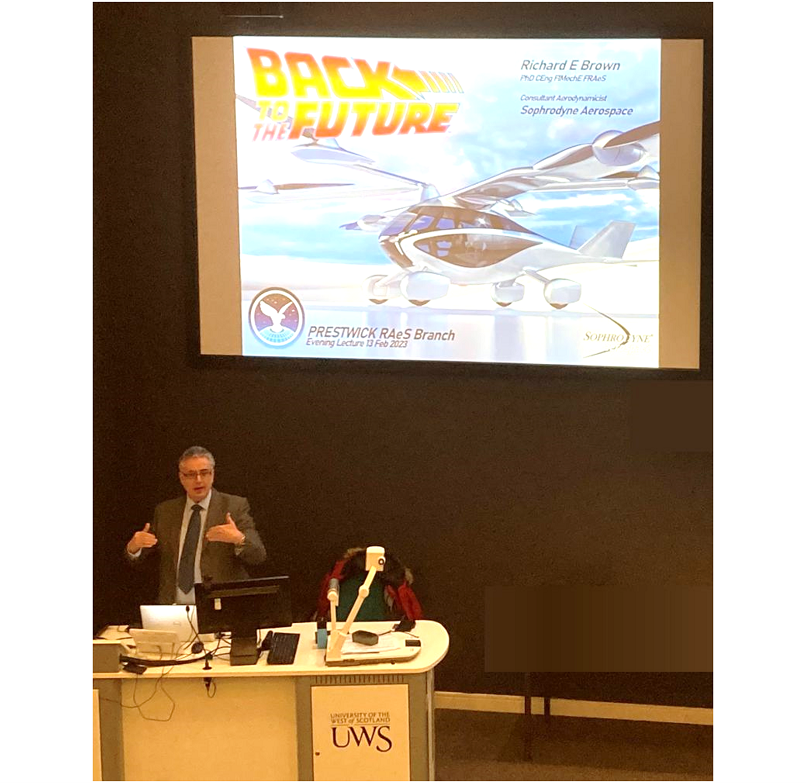
Dr Brown Presents a Public Lecture
to the Royal Aeronautical Society
to the Royal Aeronautical Society
Prestwick, 13 February 2023
Dr Brown presented his new public lecture "Back to the Future - How can Helicopter Experience inform Future Rotorcraft Design?" to the Prestwick branch of the Royal Aeronautical Society in their first live event of the year, held at the University of the West of Scotland in Ayr on 13 February.
He spoke from his own experience of thirty years as a helicopter aerodynamicist, and showed how dealing with the effects of aerodynamic interactions within the system remains one of the biggest challenges to designing a rotorcraft that has acceptable performance, stability and control.
Dr Brown explained how the challenge is to abstract the historical record into a body of knowledge that can be used to design the next generation of rotorcraft. He showed how specialised modern numerical techniques can be used to contextualise what we know from existing experimental and flight test data. The outcome might be a framework that can be used by the designers of modern eVTOL aircraft to predict and overcome the aerodynamic issues that are presented by this new class of rotorcraft.
Use the tab below if you would like to schedule Dr Brown to present this lecture to your organisation.
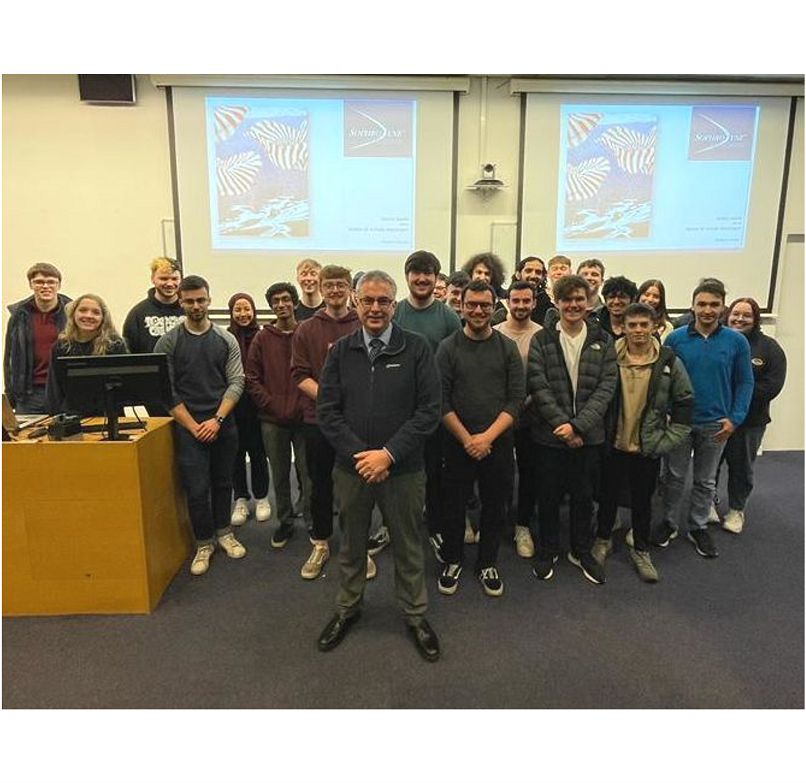
Dr Brown Presents a Lecture on Spacecraft Design
to the GU Rocketry team
to the GU Rocketry team
Glasgow, 31 January 2023
Dr Brown presented his lecture "Shock Waves and the Design of Future Spacecraft" to GU Rocketry, a team of enthusiastic young students based in the School of Engineering at Glasgow University.
The talk was based on his experience as Director of the Centre for Future Air-Space Transportation Technology, where his research group was engaged in developing computational methods that could predict the aerodynamic and thermal loads that spacecraft will encounter during their re-entry into the earth's atmosphere.
Dr Brown showed how sensible spacecraft design is constrained by the ability of the engineer's tools to be able to calculate accurately the properties of the flows that are generated by the vehicle during re-entry, and how, from early beginnings with vehicles that had spherical or conical geometry, we can now design our vehicles with shapes that are complex enough for the craft to behave very much more like a high-speed aircraft than a purely ballistic device.
He finished by explaining how the history of NASA's Space Shuttle gives a salutary warning against over-confidence in the predictive capabilities of our tools.
Use the tab below if you would like to schedule Dr Brown to present this lecture to your organisation.
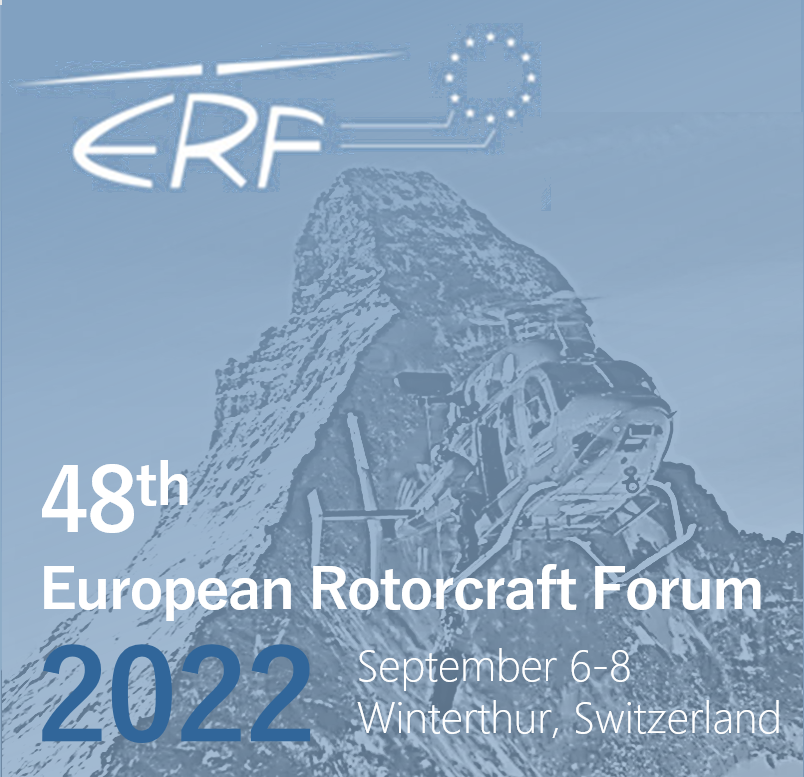
Dr Brown wins the Cheeseman Prize for his work on Vortex Ring State
19 December 2022
Just before Christmas 2022 we learned that Dr Brown had been awarded the prestigious Ian Cheeseman Prize, given annually to the best technical paper presented at that year's European Rotorcraft Forum.
The prize will allow Dr Brown to travel to the 79th Annual Vertical Fight Society Forum and Technology Display, to be held this May in West Palm Beach, Florida, USA, where he will present his paper "Are eVTOL Aircraft Inherently more susceptible to the Vortex Ring State than Conventional Helicopters?" at a special session of the conference.
The Vortex Ring State is a particularly hazardous operating regime that a rotorcraft can enter into during the critical descent and landing phases of flight. Richard's paper shows how our current understanding of the phenomenon applies to the design of modern eVTOL aircraft, and highlights a range of effects that designers and operators should be aware of in order to ensure the safety of these vehicles.
The tab below will take you to our VRS Resource page from where you can download a copy of his paper.
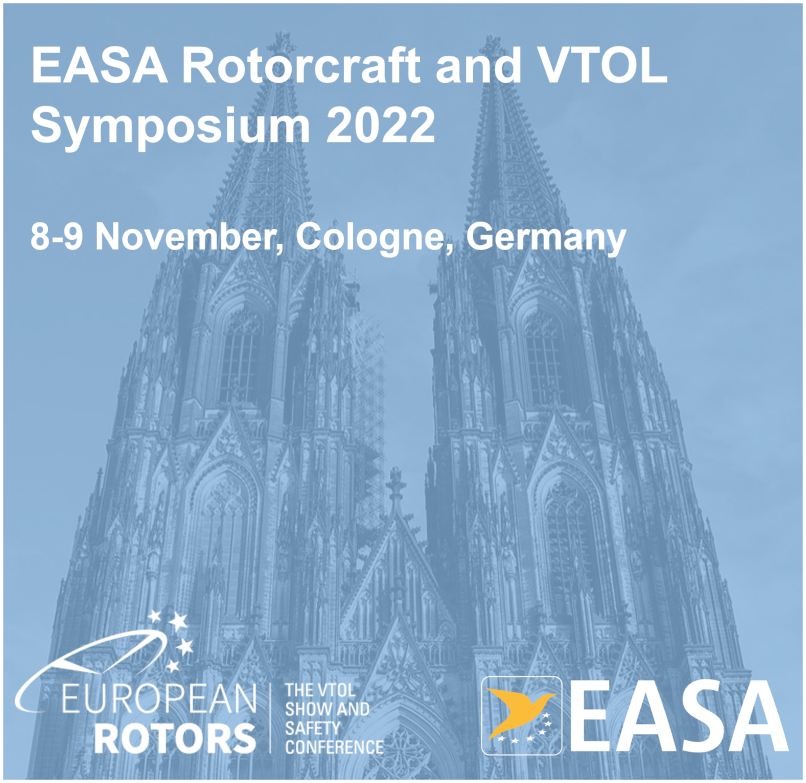
Sophrodyne Aerospace presents at the 2022 EASA Rotorcraft and VTOL Symposium
Cologne, 8 - 9 November 2022
Dr Brown presented an updated version of his paper, titled "Are eVTOL Aircraft Inherently more susceptible to the Vortex Ring State than Conventional Helicopters?" at this year's EASA Rotorcraft and VTOL Symposium, to be held from 8 - 9 November 2022 in Cologne, Germany.
The paper built on his earlier presentation at the European Rotorcraft Forum by showing some of the real problems that might be induced in the design of eVTOL aircraft if their physical characteristics and limitations are not held firmly in mind when drawing up the regulations governing the vertiports from which they will operate.
The tab below will take you to the online recording of Dr Brown's presentation.

Sophrodyne Aerospace presents at the 48th European Rotorcraft Forum
Winterthur, 6 - 8 September 2022
Dr Brown has presented a paper titled "Are eVTOL Aircraft Inherently more susceptible to the Vortex Ring State than Conventional Helicopters?" at this year's European Rotorcraft Forum, held from 6 - 8 September 2022 in Winterthur, Switzerland.
The Vortex Ring State is a particularly hazardous operating regime that a rotorcraft can enter into during the critical descent and landing phases of flight. Richard's paper shows how our current understanding of the phenomenon applies to the design of modern eVTOL aircraft, and highlights a range of effects that designers and operators should be aware of in order to ensure the safety of these vehicles.
The tab below will take you to our VRS Resource page from where you can download a copy of his paper.
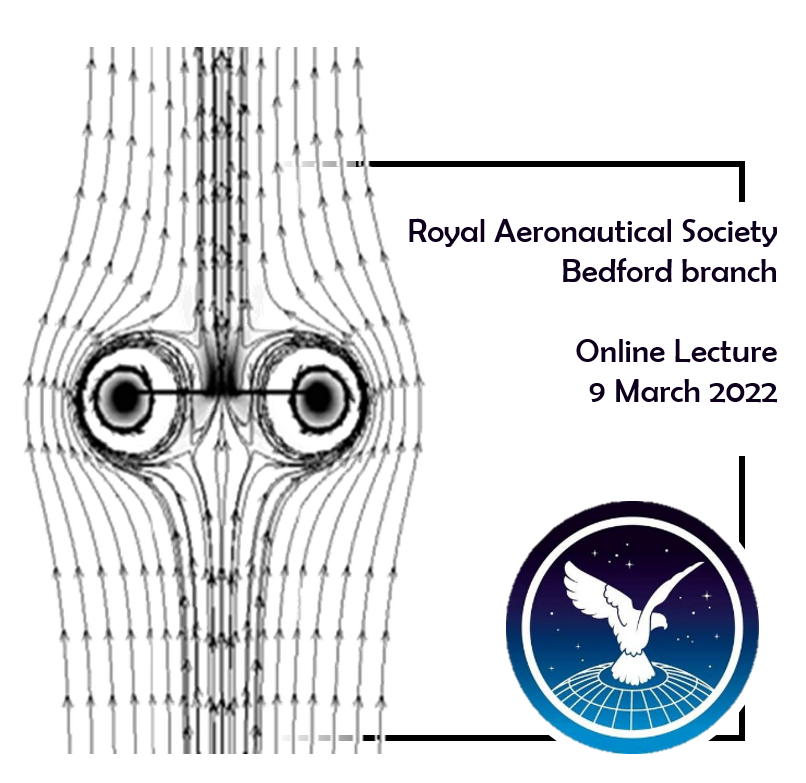
Dr Brown Presents a Public Lecture
to the Royal Aeronautical Society
to the Royal Aeronautical Society
Bedford, 9 March 2022
During his online lecture to the Bedford branch of the Royal Aeronautical Society, Dr Brown examined our current understanding of the Vortex Ring State - a particularly hazardous operating regime that a rotorcraft can enter into during the critical descent and landing phases of flight.
He first told the story of how data from laboratory and numerical experiments was combined in the mid-'00s to change our understanding of the basic mechanisms at the heart of the phenomenon. As an illustration of how mathematical abstraction can lend deep insights into practical engineering problems, he then showed how a theory was developed that is now used throughout the world to help aircraft designers to understand the susceptibility of their creations to this potentially dangerous aerodynamic phenomenon.
The specific case of the V-22 Osprey tilt-rotor was covered in detail, and Dr Brown then went on to discuss the implications of his research for the next generation of rotorcraft that are on the drawing boards.
The tab below will take you to a recording of the event.
To subscribe, please enter your name and email in the boxes below:
© Sophrodyne Ltd 2015 - 2025


